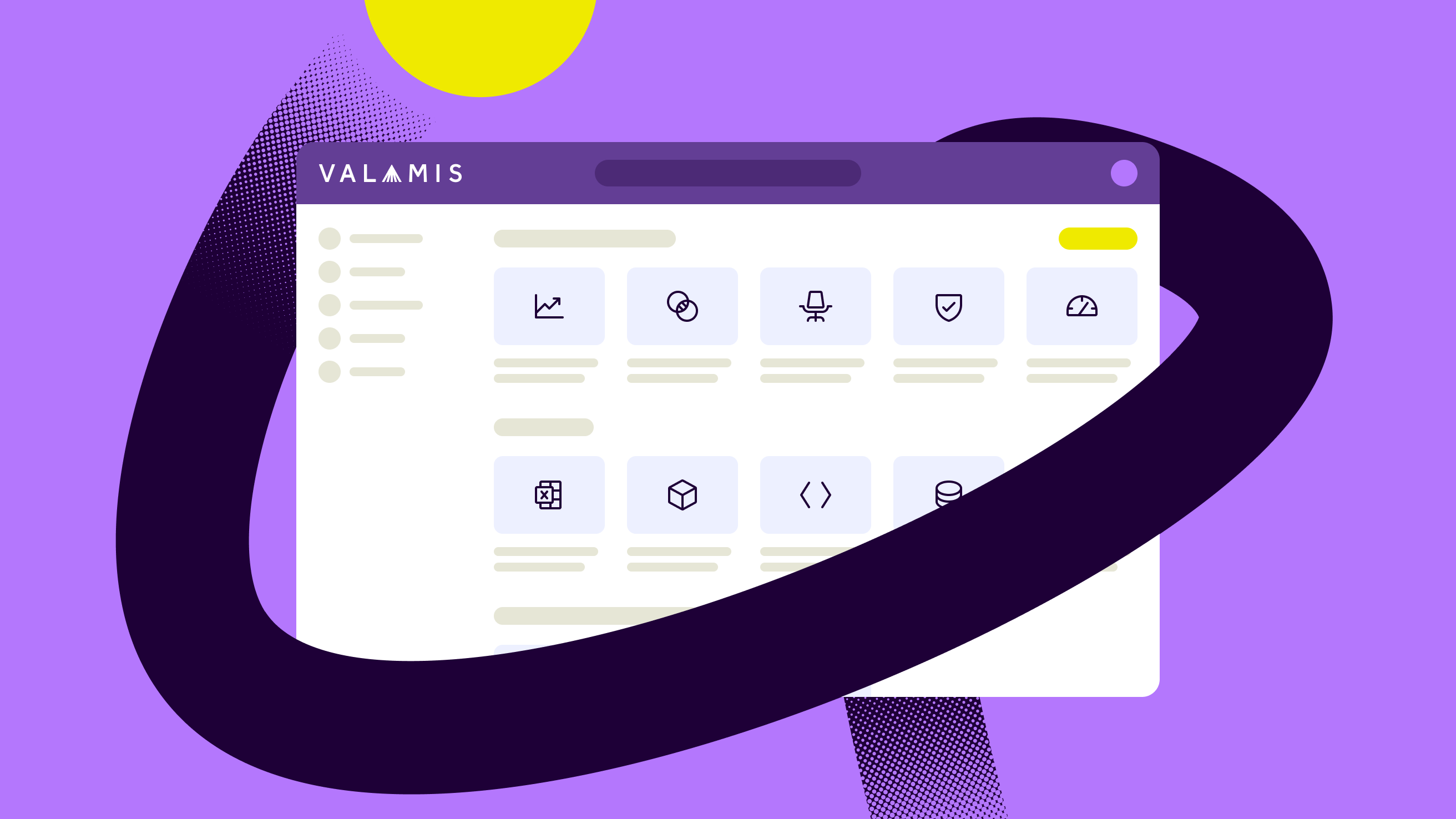7 benefits of using an Enterprise LMS
From closing skill gaps to aligning with business goals, explore seven key benefits that show why more organizations are making the switch.

An Enterprise Learning Management System (LMS) has become a critical tool for organizations aiming to scale learning, close skill gaps, and adapt to the rapidly changing world of work.
When implemented strategically, an enterprise learning platform can shift your L&D strategy from reactive and fragmented to proactive, data-driven, and aligned with your business goals.
So, what are the real benefits of adopting an enterprise LMS?
Here are seven key advantages that show why more organizations are making the switch – and why it might be time for you to do the same.
Want to dive deeper? Check out our Enterprise Learning Platform Guide for a detailed breakdown of LMS types, features, and how to choose the right solution for your organization.
A centralized learning platform
As organizations grow, so does the complexity of their learning ecosystem. Training content gets scattered, learner data lives in disconnected systems, and compliance records are hard to track. This fragmentation slows down learning and makes it harder to measure impact.
According to DATAVERSITY’s 2024 Trends in Data Management survey, 68% of organizations cite data silos as their top concern – a 7% increase from the previous year. These silos don’t just affect operations; they limit visibility and hinder strategic decision-making in L&D.
An Enterprise Learning Management System eliminates these issues by bringing everything into one centralized platform. It becomes a single source of truth where you can create, manage, and distribute learning content, track employee progress, and ensure consistency across teams, regions, and business units.
With a centralized system, learning operations become more efficient, compliance becomes easier to manage, and L&D teams gain full control over content delivery and program updates, so that there is no more chasing down files or duplicating efforts.
Personalized learning
Every employee has different skills, goals, and learning preferences, and a one-size-fits-all approach no longer works in today’s workplace. An Enterprise Learning Platform allows you to deliver personalized learning experiences based on role, skill level, and business priorities.
When training addresses real, individualized needs, it’s more engaging, more impactful, and more likely to drive behavior change.
Modern enterprise LMS platforms are increasingly powered by AI, enabling personalized learning paths, smart content recommendations, and adaptive delivery. These features make it easier for employees to find and access training that aligns with their performance goals and career development right in the flow of work.
In fact, the 2025 LinkedIn Workplace Learning Report reveals that 71% of L&D professionals are actively exploring or integrating AI into their work.
The result? More relevant learning, stronger performance outcomes, and a better employee experience.
Scalability
As your organization grows, so do your learning and development needs. A modern enterprise learning platform is built with scalability at its core, making it easy to expand training programs across teams, regions, and time zones without adding operational complexity.
Whether your company is undergoing digital transformation or entering new markets, the ability to deliver continuous learning at scale is critical. For example, upskilling your global workforce in digital literacy and fluency requires a platform that can roll out training quickly and efficiently across borders.
Enterprise LMS solutions meet this need with cloud-based infrastructure, mobile accessibility, and multilingual support, making them ideal for today’s hybrid, distributed workforces.
Because all learning activities are centrally managed, scaling your programs doesn’t mean scaling your workload. L&D teams can deploy content once and adapt it as needed, reaching employees anytime, anywhere, while maintaining a cohesive learning experience.
Reduced training costs
According to Deloitte, global corporate spending on training and development now exceeds $130 billion annually. Traditional, in-person training methods that rely on travel, venues, printed materials, and trainers can quickly drain budgets.
Due to current economic realities, companies are under increasing pressure to do more with less. The World Economic Forum ranks the rising cost of living as the second most transformative trend of 2025, with half of employers expecting it to reshape their business by 2030. Slow global economic growth is also a concern, with projections indicating it could displace 1.6 million jobs worldwide.
In this environment, cost-effective training solutions are desirable.
An Enterprise Learning Management System offers a scalable, budget-friendly alternative. By shifting learning online, organizations can dramatically reduce overhead. Digital content can be created and used across teams and time zones, eliminating the recurring costs of physical training sessions.
It also lightens the administrative load for L&D teams, allowing them to focus less on logistics and more on building impactful, high-quality learning experiences.
Enhanced employee performance and retention
In today’s fast-moving business environment, an organization’s ability to adapt is only as strong as its people and their skills. And those skills are evolving faster than ever.
By 2030, nearly 40% of the average worker’s skill set is expected to shift or become obsolete. At the same time, 49% of L&D professionals say their executives are concerned that employees lack the capabilities needed to meet strategic goals.
Technological advancement, particularly AI and automation, is the primary driver of this shift. McKinsey’s research shows that the demand for tech-related skills has been rising since 2002, but it’s set to accelerate dramatically in 2016-2030. The need to reskill and upskill has never been more pressing.
This is where an Enterprise Learning Management System becomes essential. An enterprise LMS enables organizations to deliver targeted, scalable learning experiences that build future-ready teams. Whether you’re preparing employees for emerging technologies, strengthening leadership pipelines, or helping teams quickly respond to industry changes, a learning management platform ensures your workforce stays one step ahead.
Learning also plays a significant role in employee retention. LinkedIn notes that 88% of companies are concerned about retaining talent, and the most common solution is providing learning development opportunities.
When learning is directly connected to meaningful growth and business outcomes, it doesn’t just boost performance; it gives employees a reason to stay and grow with your organization.

How to conduct a skills gap analysis and what to do next
Start building your foundation for strategic workforce development.
Download guideSimplified compliance training
Compliance is a constant, whether it’s adhering to global data privacy laws, keeping up with evolving industry regulations, or ensuring employees maintain required certifications. However, managing mandatory training can quickly become complex and time-consuming for large, distributed organizations.
An Enterprise Learning Management System streamlines compliance by automating the entire process. From assigning courses and tracking completion to issuing certifications and generating audit-ready reports, an LMS reduces risk while easing the administrative burden.
The urgency for simplified compliance is only growing. According to the IBE Compliance Training Benchmarking Report, 15% of respondents said their organization has been providing less ethics and compliance training since the pandemic – a worrying trend as regulatory scrutiny continues to rise. A robust LMS helps ensure critical training doesn’t fall through the cracks, even during times of disruption.
With centralized dashboards and real-time insights, L&D leaders and compliance managers gain complete visibility into training progress, knowing who’s completed what, who needs a reminder, and which deadlines are on the horizon.
In short, an LMS makes compliance training easier to manage, track, and scale so your teams stay aligned and your organization stays protected.
Data-driven insights
How do you know if your training programs are actually working? With an Enterprise Learning Management System, you don’t have to guess.
LMS platforms are equipped with powerful analytics tools that go far beyond basic course completion stats. You can track learner engagement, monitor skills development, identify knowledge gaps, and evaluate training effectiveness in real-time. You can also break this data down by department, region, or role to get targeted insights and optimize learning strategies accordingly.
More importantly, when L&D data is integrated with broader business metrics, it becomes a strategic asset. You can directly connect training outcomes to business goals like productivity, innovation, and employee retention, making it easier to demonstrate ROI and gain executive buy-in.
Whether you’re streamlining learning or strengthening your company’s innovation edge, the right data strategy helps you link training efforts directly to real business outcomes. Explore how to maximize learning outcomes with insights from your LMS data analytics.




